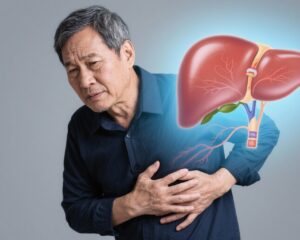Introduction
Influenza infection is a major precipitating factor for worsening heart failure (HF), especially during annual flu seasons. Despite recognition of this risk, uptake of influenza vaccination among HF patients remains globally low, particularly in Asia where rates are reported below 3%, with China having even less than 1%. Previously, lack of robust randomized clinical trial data limited the strength of guideline recommendations, which often classified flu vaccination as a modest IIa-level advisory rather than mandatory management. The critical clinical question remained: does influenza vaccination concretely improve prognosis and survival in patients with acute heart failure?
Background and Disease Burden
Heart failure, characterized by impaired cardiac function and symptoms such as shortness of breath and fatigue, imposes significant morbidity and mortality worldwide. Annual influenza outbreaks exacerbate HF by inducing systemic inflammation, respiratory complications, and increased cardiovascular stress, thereby heightening risks of hospitalization and death. International HF guidelines historically justified influenza vaccination primarily on theoretical and observational grounds but awaited definitive evidence from large-scale randomized trials to support stronger recommendations.
Study Design
The PANDA II study addressed this evidence gap through a robust, multi-regional, cluster-randomized controlled trial conducted across China. Between 2021 and 2024, the trial enrolled 7,771 adult patients hospitalized with moderate to severe acute heart failure (NYHA Class III-IV) without contraindications to the flu vaccine. Participating hospitals (164 centers over 12 provinces) were randomized to an intervention strategy offering free in-hospital influenza vaccination prior to discharge, versus usual care where vaccination was recommended but necessitated patient-initiated community immunization at their own cost.
Primary endpoint was a composite of all-cause mortality or all-cause rehospitalization within one year post-discharge. Secondary endpoints included individual components of mortality and rehospitalization rates, along with evaluation of vaccine safety.
Key Findings
The intervention markedly increased vaccination uptake, with 94.4% of patients in the in-hospital vaccination group receiving the flu shot versus only 0.5% in the control group. Follow-up data revealed significant outcome improvements:
– The composite endpoint occurred in 41.2% in the vaccination group versus 47.0% in controls, translating to an absolute risk reduction (ARR) of 5.8% (OR 0.83; 95% CI 0.72-0.97; p=0.019).
– Vaccination prevented one composite event per 27 patients treated, indicating a high comparative efficiency relative to many cardiovascular preventive therapies.
– All-cause mortality at 12 months was significantly lower at 10.0% versus 12.8% (OR 0.76; 95% CI 0.69-0.84; p<0.0001).
– Hospital readmission rates at one year also decreased (35.4% vs 40.5%; OR 0.83; 95% CI 0.70-0.99; p=0.037).
Safety analyses affirmed that flu vaccination was well tolerated, with lower incidence of serious adverse events in the vaccinated group (52.5% vs 59.0%; OR 0.82; 95% CI 0.70-0.96; p=0.013) and no vaccine-related serious safety concerns detected. Mild local injection site reactions were noted but did not affect HF management.
Expert Commentary
Professor Craig Anderson, principal investigator and esteemed neurologist and clinical researcher at Fudan University, emphasized that PANDA II is groundbreaking in definitively demonstrating influenza vaccination’s lifesaving role in acute heart failure patients. The study’s extensive sample size, regional diversity, rigorous cluster-randomized design, and low attrition (<5%) bolster the robustness and representativeness of its findings.
The trial underscores the synergistic potential of preventive medicine alongside conventional heart failure therapies, advocating vaccination as standard-of-care rather than optional advice. Moreover, the relatively low number needed to treat (NNT=27) highlights influenza vaccination’s clinical efficiency.
Limitations include geographic confinement to China which may require confirmation in other populations, and the singular targeting of acute HF patients; however, strong biological plausibility and minimal safety concerns suggest broad applicability.
Implementation and Challenges
The six-year PANDA II endeavor embodies a monumental collaborative effort involving hospitals spanning tertiary to regional centers, seamlessly integrating influenza vaccination into routine discharge protocols with minimal disruption to workflow. The study’s success was enabled by strong physician engagement, patient and family cooperation, and innovative strategies adapted during the COVID-19 pandemic.
Current influenza vaccination rates among HF patients worldwide remain suboptimal, often due to logistical, financial, and patient hesitancy barriers. PANDA II’s model of hospital-based free vaccination prior to discharge dramatically overcomes these obstacles, suggesting a scalable approach for global practice.
Impact on Guidelines and Clinical Practice
Prior recommendations by leading cardiac societies including the European Society of Cardiology and the American College of Cardiology largely categorized influenza immunization in HF as a low-level or IIa class recommendation, reflecting uncertain evidence. PANDA II’s definitive RCT data elevate vaccination to a potential class I standard akin to cornerstone therapies like beta-blockers or ACE inhibitors.
This trial is poised to trigger an international paradigm shift—from passive suggestion toward mandatory incorporation of influenza vaccination in the heart failure treatment algorithm. Annual vaccination before flu season should be embraced as a key component of HF management to enhance survival and reduce hospital utilization.
Conclusion
The PANDA II trial represents a landmark achievement confirming that influenza vaccination significantly improves one-year mortality and rehospitalization outcomes in patients with acute heart failure. It fills a crucial evidence gap and strongly advocates flu vaccine administration as an essential therapeutic measure alongside established pharmacotherapies. Broader adoption of hospital-based vaccination programs could revolutionize heart failure care and reduce the global burden of disease exacerbations associated with seasonal influenza.
Clinicians should counsel eligible heart failure patients on the critical benefits and safety of influenza vaccination, advancing its role from optional recommendation to indispensable standard of care.
References
Anderson CS, Hua C, Wang Z, Wang C, Jiang C, Liu R, Han R, Li Q, Shan S, Billot L, Macintyre CR, Patel A, Zhang H, Ma C, Dong J, Du X. Influenza vaccination to improve outcomes for patients with acute heart failure (PANDA II): a multiregional, seasonal, hospital-based, cluster-randomised, controlled trial in China. Lancet. 2025 Aug 28:S0140-6736(25)01485-0. doi: 10.1016/S0140-6736(25)01485-0. Epub ahead of print. PMID: 40897187.



